388 low relevance results shown for 'End'. Prev |1|2|3|4|5|6|7|8|9|10|11|12|13|14|15|16 | Next | View 100 per page
Showing low relevance matches only. Return to normal search results
Forces and Moving - The way objects move depends on a variety of factors including their size and shape ACSSU073 Year 4 Biological Sciences
Animal Survival - Living things, including plants and animals, depend on each other and the environment to survive ACSSU175 Year 9 Biological Sciences
Organ Systems - Multi-cellular organisms rely on coordinated and interdependent internal systems to respond to changes to their environment ACSSU176 Year 9 Biological Sciences
Ecology - Ecosystems consist of communities of interdependent organisms and abiotic components of the environment; matter and energy flow through these systems ACSBL046 Year 11 Cells and multicellular organism
Cells as the basis of life - Movement of materials across membranes occurs via diffusion, osmosis, active transport and/or endocytosis ACSCH016 Year 11 Chemical fundamentals
Properties and structure of atoms - Trends in the observable properties of elements are evident in periods and groups in the periodic table ACSCH025 Year 11 Chemical fundamentals
Properties and structure of materials - Materials are either pure substances with distinct measurable properties (for example, melting and boiling point, reactivity, strength, density) or mixtures with properties dependent on the identity and relative amounts of the substances that make up the ACSCH030 Year 11 Chemical fundamentals
Properties and structure of materials - Ions are atoms or groups of atoms that are electrically charged due to an imbalance in the number of electrons and protons; ions are represented by formulae which include the number of constituent atoms and the charge of the ion (for example, O2–, SO42–) ACSCH032 Year 11 Chemical fundamentals
Properties and structure of materials - The characteristic properties of metals (for example, malleability, thermal conductivity, electrical conductivity) are explained by modelling metallic bonding as a regular arrangement of positive ions (cations) made stable by electrostatic forces of attra ACSCH037 Year 11 Chemical fundamentals
Chemical reactions - Endothermic and exothermic reactions can be explained in terms of the Law of Conservation of Energy and the breaking and reforming of bonds; heat energy released or absorbed can be represented in thermochemical equations ACSCH066 Year 11 Molecular interactions and reactions
Aqueous solutions and acidity - The pH scale is used to compare the levels of acidity or alkalinity of aqueous solutions; the pH is dependent on the concentration of hydrogen ions in the solution ACSCH097 Year 12 Equilibrium acids and redox reactions
Chemical equilibrium systems - Acids are substances that can act as proton (hydrogen ion) donors and can be classified as monoprotic or polyprotic depending on the number of protons donated by each molecule of the acid ACSCH102 Year 12 Equilibrium acids and redox reactions
Chemical equilibrium systems - Volumetric analysis methods involving acidbase reactions rely on the identification of an equivalence point by measuring the associated change in pH, using chemical indicators or pH meters, to reveal an observable end point ACSPH099 Year 12 Gravity and electromagnetism
Gravity and motion - Projectile motion can be analysed quantitatively by treating the horizontal and vertical components of the motion independently ACSPH100 Year 12 Gravity and electromagnetism
Gravity and motion - When an object experiences a net force of constant magnitude perpendicular to its velocity, it will undergo uniform circular motion, including circular motion on a horizontal plane and around a banked track ACSPH098 Year 12 Gravity and electromagnetism
Gravity and motion - The vector nature of the gravitational force can be used to analyse motion on inclined planes by considering the components of the gravitational force (that is, weight) parallel and perpendicular to the plane
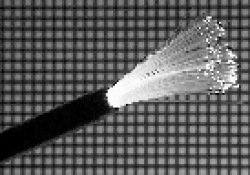
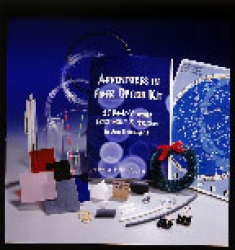
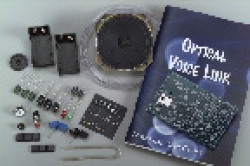
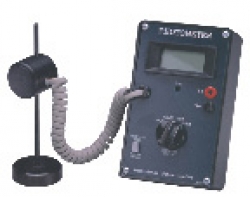

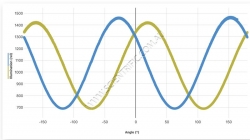
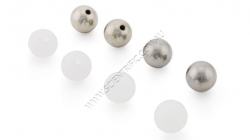
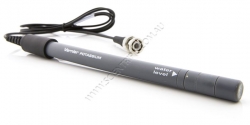
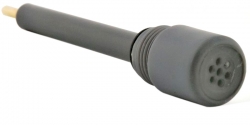
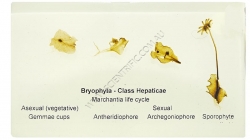
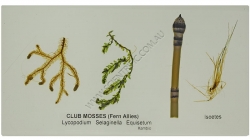
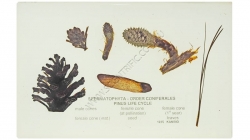
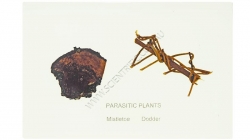
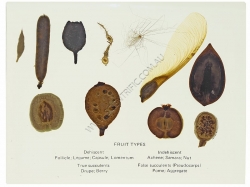
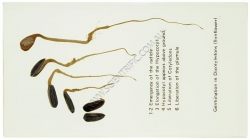
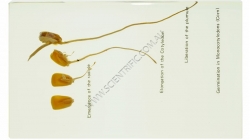
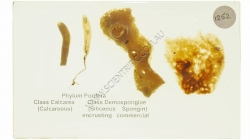
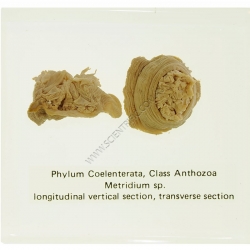
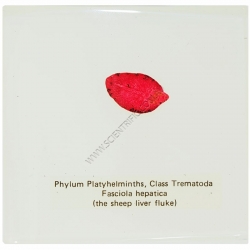
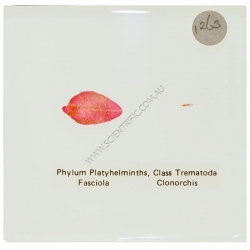
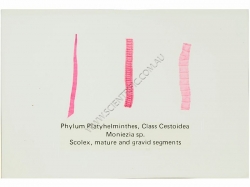
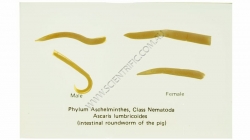
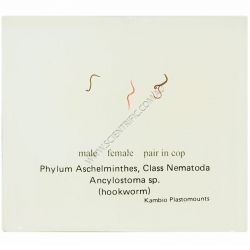

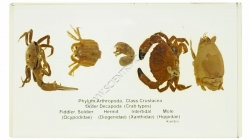
388 low relevance results shown for 'End'. Prev |1|2|3|4|5|6|7|8|9|10|11|12|13|14|15|16 | Next | View 100 per page
Showing low relevance matches only. Return to normal search results
Curriculum resources related to 'End'
ACSSU005 Foundation Physical SciencesForces and Moving - The way objects move depends on a variety of factors including their size and shape ACSSU073 Year 4 Biological Sciences
Animal Survival - Living things, including plants and animals, depend on each other and the environment to survive ACSSU175 Year 9 Biological Sciences
Organ Systems - Multi-cellular organisms rely on coordinated and interdependent internal systems to respond to changes to their environment ACSSU176 Year 9 Biological Sciences
Ecology - Ecosystems consist of communities of interdependent organisms and abiotic components of the environment; matter and energy flow through these systems ACSBL046 Year 11 Cells and multicellular organism
Cells as the basis of life - Movement of materials across membranes occurs via diffusion, osmosis, active transport and/or endocytosis ACSCH016 Year 11 Chemical fundamentals
Properties and structure of atoms - Trends in the observable properties of elements are evident in periods and groups in the periodic table ACSCH025 Year 11 Chemical fundamentals
Properties and structure of materials - Materials are either pure substances with distinct measurable properties (for example, melting and boiling point, reactivity, strength, density) or mixtures with properties dependent on the identity and relative amounts of the substances that make up the ACSCH030 Year 11 Chemical fundamentals
Properties and structure of materials - Ions are atoms or groups of atoms that are electrically charged due to an imbalance in the number of electrons and protons; ions are represented by formulae which include the number of constituent atoms and the charge of the ion (for example, O2–, SO42–) ACSCH032 Year 11 Chemical fundamentals
Properties and structure of materials - The characteristic properties of metals (for example, malleability, thermal conductivity, electrical conductivity) are explained by modelling metallic bonding as a regular arrangement of positive ions (cations) made stable by electrostatic forces of attra ACSCH037 Year 11 Chemical fundamentals
Chemical reactions - Endothermic and exothermic reactions can be explained in terms of the Law of Conservation of Energy and the breaking and reforming of bonds; heat energy released or absorbed can be represented in thermochemical equations ACSCH066 Year 11 Molecular interactions and reactions
Aqueous solutions and acidity - The pH scale is used to compare the levels of acidity or alkalinity of aqueous solutions; the pH is dependent on the concentration of hydrogen ions in the solution ACSCH097 Year 12 Equilibrium acids and redox reactions
Chemical equilibrium systems - Acids are substances that can act as proton (hydrogen ion) donors and can be classified as monoprotic or polyprotic depending on the number of protons donated by each molecule of the acid ACSCH102 Year 12 Equilibrium acids and redox reactions
Chemical equilibrium systems - Volumetric analysis methods involving acidbase reactions rely on the identification of an equivalence point by measuring the associated change in pH, using chemical indicators or pH meters, to reveal an observable end point ACSPH099 Year 12 Gravity and electromagnetism
Gravity and motion - Projectile motion can be analysed quantitatively by treating the horizontal and vertical components of the motion independently ACSPH100 Year 12 Gravity and electromagnetism
Gravity and motion - When an object experiences a net force of constant magnitude perpendicular to its velocity, it will undergo uniform circular motion, including circular motion on a horizontal plane and around a banked track ACSPH098 Year 12 Gravity and electromagnetism
Gravity and motion - The vector nature of the gravitational force can be used to analyse motion on inclined planes by considering the components of the gravitational force (that is, weight) parallel and perpendicular to the plane
Products related to 'End'

Light Guide 64 Strand Metre
Comprises a bundle of many unjacketed fibres useful for exotic lighting and demonstrations. Multi fibres are used because of the smaller bend radius of the individual fibres compared to a large single fibre. Strands are 245µm dia. polymethyl methacrylate core with a 10µm clad...
Order code: IF-C-LG64

Adventures In Fibre Optics
This kit is aimed at kids aged from 10 up. It contains a full colour Instruction Manual and materials to complete five unique projects and 20 experiments including: bending a light guide, fluorescence, Tyndall's Light In Water experiment, Fibre Optic Lighting, Art of Polishing Gl...
Order code: IF-E60

Optical Fibre Voice Link 1 Way Unassembled
OPTICAL FIBRE VOICE LINK ONE WAY UNASSEMBLED
Bring the reality of fibre optic communications into the classroom. This kit gives a hands on experience and demonstrates how:
• Voice recordings can be converted to light
• Light can then be coupled into an optical fibre
• ...
Order code: IF-OVL10-K

Photometer 19.99uW to 19.99mW
This versatile meter can be used for measuring the power levels of both visible and infra red laser beams, solar experiments plus demodulating audio optical signals. Battery power, portability and adjustable height makes the photometer very flexible. The photometer's reading is d...
Order code: IF-PM

XY Pattern Generator
This is a fascinating way to capture students' attention and imagination by using with any laser to create endless combinations of patterns and shapes similar to those seen in laser light shows. Use to create light shows, dynamically contrast stereo and mono audio sounds, mimic t...
Order code: IF-XYP

Vernier Instrumental Analysis
Free download
VERNIER INSTRUMENTAL ANALYSIS
With the free Vernier Instrumental Analysis® app, students can collect and analyze data from Vernier's Go Direct Mini GC™, Go Direct Polarimeter and Go Direct Cyclic Voltammetry System using computers, Chromebooks or other mobile devices.
...

Vernier IOM-VPL Replacement Balls
VERNIER REPLACEMENT BALLS FOR IOM ACCESSORY
Steel and plastic replacement balls for the IOM-VPL Independence of Motion Accessory.
The replacement set includes 4 plastic balls and 4 steel balls.
Order code: IOM-BLS

Vernier Potassium Ion-Selective Electrode BNC
VERNIER POTASSIUM ION-SELECTIVE ELECTRODE BNC
The Vernier Potassium Ion-Selective Electrode BNC Connector is a BNC-terminated electrode used to measure the concentration of potassium (K+) ions in aqueous samples. The Potassium Ion-Selective Electrode BNC connects via BNC ...
Order code: K-BNC

Vernier ISE Potassium Replacement Module
VERNIER ISE POTASSIUM REPLACEMENT MODULE
The Vernier Potassium Ion-Selective Electrode Module replaces the electrode membrane. Simply unscrew the old one and screw on the new one.
The membrane of a Vernier Potassium ISE electrode has a limited life span of one to two ...
Order code: K-MOD

Plastomount Marchantia Life Cycle - Thallus with Gemma Cupules Antheridial and Archegonial plants and Sporophyte
Thallus with gemma cupules, antheridial and archegonial plants and sphorophytes embedded in a clear plastic resin. Each plastomount has an embedded legend naming the individual specimens. Students often don't relate to imported specimens but they will recognise many of these spe...
Order code: K1216

Plastomount Club Mosses - Isoetes Lycopodium Selaginella and Equisetum Fruiting Bodies
Last one available
Isoetes, Lycopodium, Selaginella and Equisetum fruiting bodies embedded in a clear plastic resin. Each plastomount has an embedded legend naming the individual specimens. Students often don't relate to imported specimens but they will recognise many of these specimens immediatel...
Order code: K1222

Plastomount Pinus Life Cycle - Staminate Female Cone at Pollination First Winter Cone Mature Cone Seed and Twigs
Staminate, female cone at pollination, first winter cone, mature cone, seed and twigs embedded in a clear plastic resin. Each plastomount has an embedded legend naming the individual specimens. Students often don't relate to imported specimens but they will recognise many of the...
Order code: K1225

Plastomount Parasitic Plants 2 Forms for Comparison
Comparison of two forms of parasitic plants embedded in a clear plastic resin. Each plastomount has an embedded legend naming the individual specimens. Students often don't relate to imported specimens but they will recognise many of these specimens immediately.
Order code: K1228

Plastomount Fruit Types 10 Examples showing dehiscent and indehiscent fruits and true and false succulents
Last one available
Ten examples showing dehiscent and indehiscent fruits, true and false succulents, all embedded in a clear plastic resin. Each plastomount has an embedded legend naming the individual specimens. Students often don't relate to imported specimens but they will recognise many of the...
Order code: K1230

Plastomount Germination in Dicotyledons
Last one available
Germination in Dicotyledons embedded in a clear plastic resin. Each plastomount has an embedded legend naming the individual specimens. Students often don't relate to imported specimens but they will recognise many of these specimens immediately.
Order code: K1240

Plastomount Germination in Monocotyledons
Last one available
Germination in Monocotyledons embedded in a clear plastic resin. Each plastomount has an embedded legend naming the individual specimens. Students often don't relate to imported specimens but they will recognise many of these specimens immediately.
Order code: K1241

Plastomount Sponge Types Examples Comparing Siliceous and Spongin Sponges
Last one available
Examples comparing siliceous and spongin sponges embedded in a clear plastic resin. Each plastomount has an embedded legend naming the individual specimens. Students often don't relate to imported specimens but they will recognise many of these specimens immediately.
Order code: K1252

Plastomount Metridium A Typical Anemone in Transverse and Vertical Sections
Last one available
Metridium, a typical anemone, in transverse and vertical sections, embedded in a clear plastic resin. Each Plastomount has an embedded legend naming the individual specimens. Students often don't relate to imported specimens but they will recognise many of these specimens immedi...
Order code: K1258

Plastomount Fasciola Hepatica Sheep Liver Fluke
Last one available
Sheep liver fluke embedded in a clear plastic resin. Each plastomount has an embedded legend naming the individual specimens. Students often don't relate to imported specimens but they will recognise many of these specimens immediately.
Order code: K1262

Plastomount Fasciola and Clonorchis Comparison Stained Specimens
Last one available
Stained Fasciola and Clonorchis specimens embedded in a clear plastic resin. Each plastomount has an embedded legend naming the individual specimens. Students often don't relate to imported specimens but they will recognise many of these specimens immediately.
Order code: K1263

Plastomount Moniezia Expansa Flattened and Stained Scolex Mature and Gravid Segments
Last one available
Flattened and stained, scolex, mature and gravid segments embedded in a clear plastic resin. Each plastomount has an embedded legend naming the individual specimens. Students often don't relate to imported specimens but they will recognise many of these specimens immediately.
Order code: K1265B

Plastomount Ascaris Lumbricoides Male and Female Specimens
Last one available
Male and female specimens embedded in a clear plastic resin. Each plastomount has an embedded legend naming the individual specimens. Students often don't relate to imported specimens but they will recognise many of these specimens immediately.
Order code: K1267

Plastomount Ancylostoma Caninum Hookworm Male and Female and a Pair in Copula
Last one available
Hookworm, male, female and a pair in copula, all embedded in a clear plastic resin. Each plastomount has an embedded legend naming the individual specimens. Students often don't relate to imported specimens but they will recognise many of these specimens immediately.
Order code: K1268

Plastomount Nereis Entire Sandworm
Last one available
A sandworm specimen embedded in a clear plastic resin. Each plastomount has an embedded legend naming the individual specimens. Students often don't relate to imported specimens but they will recognise many of these specimens immediately.
Order code: K1278

Plastomount Crab Types Fiddler Soldier Hermit Rock Mole Crabs
Last one available
Fiddler, soldier, hermit, rock and mole crab specimens embedded in a clear plastic resin. Each plastomount has an embedded legend naming the individual specimens. Students often don't relate to imported specimens but they will recognise many of these specimens immediately.
Order code: K1293
388 low relevance results shown for 'End'. Prev |1|2|3|4|5|6|7|8|9|10|11|12|13|14|15|16 | Next | View 100 per page



 ,
,